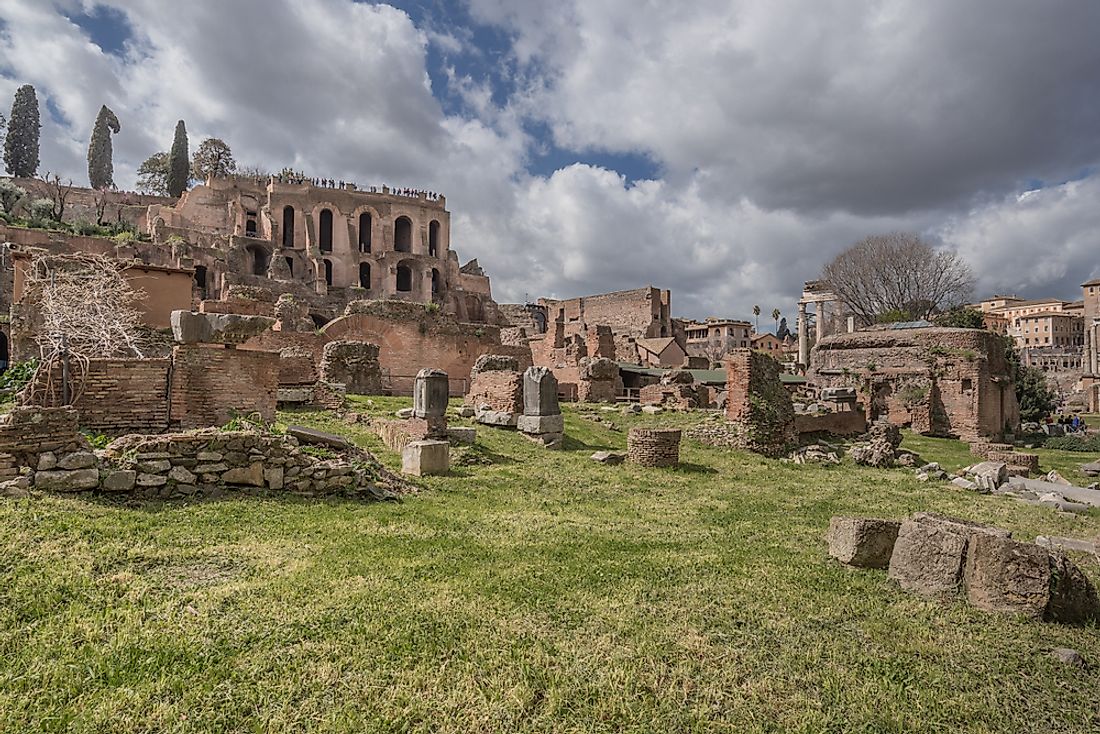What are the Seven Hills of Rome?

The Seven Hills of Rome lie east of river Tiber. Located within the walls of the city, the hills form the geographical heart of Rome. The Seven Hills of Rome are Esquiline Hill, Aventine Hill, Quirinal Hill, Caelin Hill, Viminal Hill, Capitoline Hill, and Palatine Hill. References are made to the hills as they are intertwined with the foundation of Rome, its consolidation of power, and the original delineation of its limits. Due to constructions and development of Rome, the seven hills currently resemble ridges more so than well-defined mounts. As you walk around in modern Rome, you will be aware of the rising and falling ground. However, due to the many buildings the underlying topography may not be as clear as it was in the Roman times.
History of the Seven Hills
According to the Roman tradition, Romulus is the founder of Rome city. He founded the city in April 21,753 BCE on Palatine Hill. The small settlements that first occupied the seven hills were scattered all over. The occupants of the Seven Hills of Rome started participating in religious games. In the process, the games brought the scattered people together. Suddenly, the city of Rome came into existence due to coming together of the scattered groups. People worked in unity; drained water, logged, vegetated valleys, and converted them into markets. Later, they constructed the Servian Walls in the early 4th century BCE in order to protect the seven hills.
Five of the Seven Hills (Esquiline Hill, Viminal Hill, Aventine Hill, Caelian Hill, and Quirinal Hill) are crowded with parks, monuments and buildings. In addition, Palatine Hill acts as an archaeological site while Capitoline Hill currently hosts the city hall of Rome.
The Seven Hills of Rome
Viminal Hill
Viminal Hill lies north of Esquiline Hill, and is currently known for its sprawling Termini station. It is also a tourist attraction hosting the Terme Museum. The museum is a priceless site with beautiful Frescoes kept in what Romans call House of Livia. Furthermore, Terme Museum has prominent statues such as Terme Boxer, Terme Ruler, and Augustus as Pontifex Maximus. Viminal Hill also has Diocletian Baths where tourists can visit. Also available are the Caracalla Baths that are the largest and the most impressive of all the imperial houses of bath in Rome.
Quirinal Hill
The Italian President house, Palazzo del Quirinale, rests on Quirinal Hill. Quirinal Hill also has Palazzo Barberini for those who love art. Palazzo Barberini is a site for Baroque church of San Carlo alle Quattro Fontane and Galleria Nationale d’Arte Antica.
Caelian Hill
The Caelian Hill lies south of Colosseum. It is a good place for Christians as it has several churches. Examples are Santi Quattro Coronati, Santo Stefano Rotondo, and Santi Giovanni e Paolo. Saint John Lateran Basilica, still in Caelin Hill, is the largest among the four papal churches.
Palatine Hill
The Palatine Hill is where Romulus discovered the original city of Rome. This is where aristocrats had luxurious houses during Republican period. However, the emperor took over the entire hill during imperial period and constructed the palace. Today, the entire hill is an archaeological site.
Capitoline Hill
The Capitoline Hill was home to significant building in ancient Rome. It has Tarpeian Rock on which the Romans knocked ancient Rome traitors to death. The hill also has two temples, Juno and Jupiter, whose foundations are in Palazzo Senatorio.
Esquiline Hill
The Equiline Hill exhibits modern Rome. It is located North of Colosseum and South of Termini. Esquiline is rich in monuments, few small churches, and a great basilica of Santa Maria Maggiore. One of the monuments is the original Republican city gates called ‘Arch of Gallienus’. Currently, the monument lies between modern buildings. On the other hand, Santa Maria Maggiore church bears the relics of ancient Rome.
Aventine Hill
Aventine Hill was originally the area for the city of Rome. It divides into two parts: the Greater Aventine and the Lesser Aventine. Aventine hill lies outside Rome’s sacred boundary. Traditionally, the Romans associated the hill with Rome’s ancient plebs. The main attractions on this hill are Santa Sabina church and orange grove.











